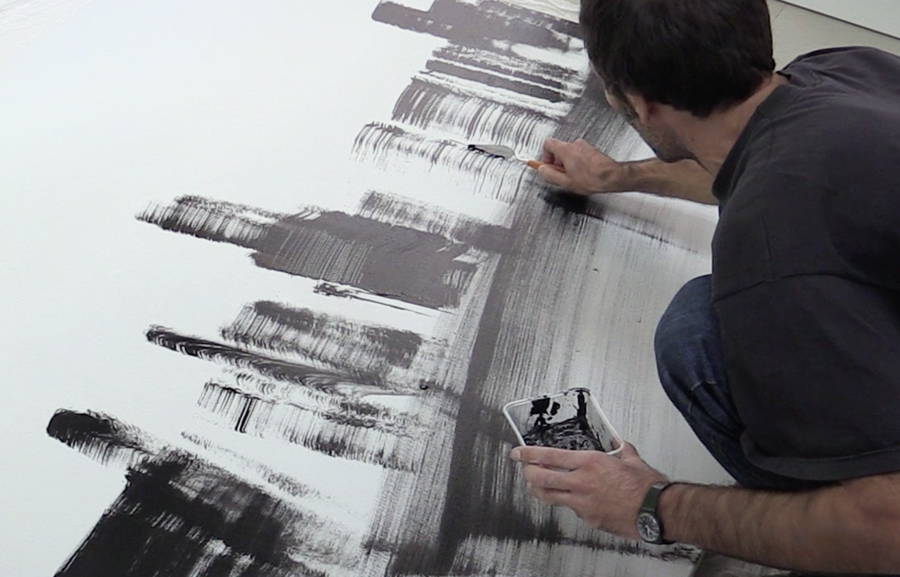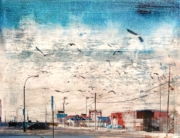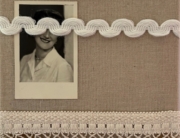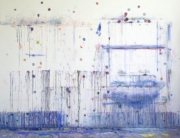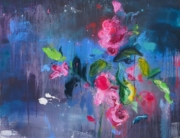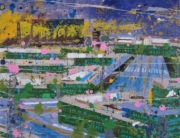“I didn’t know it before, but I’ve always painted Chinese cities.”
That’s what Francesco Barbieri told me when his residency at Nanjing University was coming to an end.
This insight – an “epiphany” of some sort – not only provides us with privileged access to the works included in this exhibition, but also illuminates Barbieri’s overall artistic evolution. This “maieutic journey,” whereby Barbieri has discovered what was already there, is in effect an important turning point in his career. Since then, he has found a synthesis between his two souls, the graffiti writer and the painter, and discovered his truer and strongest voice.
In his journey so far, Barbieri has followed a trajectory that is as unique and authentic as his results are. By going in the opposite direction of the majority of those also involved in post-graffitism, he refused to capitalize on his “street credit.” He opted for a fresh start and began an artistic trajectory ex-novo. This was not an easy choice: Barbieri had to confront many difficulties in adapting to a new artistic identity, a different context of exhibition, and a change in medium and preferred techniques. And yet, he has found his ways to overcome those difficulties, coming to full circle as an artist.
Through an in-depth study of the Chinese metropolis, Barbieri has explored in real life the world he imagined in his paintings: fast trains cutting like sharp blades through smoky urban territories, where overhead cables hanging from electric poles connect like ghostly hair menacing skyscrapers.
But in his production after Nanjing, for the first time, historical buildings also appear: pagodas, temples, and ancient towers peek in and interrupt the post-industrial skyline. We are beyond the dystopia: now, we live in a world that is more complex, where tradition and modernity are in dialogue, light coexists with darkness, and life as nature not only reveals itself within the interstices of the spectral city, but sometimes dominates it.
By walking through the streets of China, Barbieri has faced his own duplicity. In the walls of Nanjing, Beijing, Shanghai, and Wuxi he has seen his own reflection, but did not fall into Narcissus’ trap. Rather than losing himself, he has brought back into the studio his alter-ego. From this uncanny meeting with a familiar “stranger,” he has learned much about himself and his art. His artisticc view has become wider, his style braver, and his pictorial gesture firmer. In his journey through an alien culture and through his different voices, Barbieri has found the fundamental note that harmonizes all the complex and polyphonic melodies simultaneously resonating in his individual personality. Now, his hand can hold a paintbrush as if it were a spray can, and vice versa. As a prophecy of this newly found unity, a calligraphy of his name — though in Chinese and not in the style of graffiti – appears in one of the paintings included in this exhibition. An amphibious creature, Barbieri has discovered that he can breathe on dry land and underwater.
Conceived by a littoral being, his works are forms of expression lying “in between,” joining different domains and spheres: art and life, the studio and the city, the gallery and the street. Barbieri’s works emerge from his dialogue with all these contexts. Such a dialogue exceeds the contemplative or metaphoric dimensions, and becomes material, influencing not only the meaning but also the very constitution of his pieces. Barbieri practices the urban spaces surrounding him, and interact with his fellow travelers. He literally brings back to his studio parts of the city: interstitial elements like cans of house paint abandoned around construction sites or tears of ripped billboards, and nobler components such as fine grained paper or even artworks, which all appear in his production.
Rather than representing accurately a place, which is always imagined and often deconstructed in his works, Barbieri’s paintings symbolize and embody our post- industrial condition. In this sense, we are not looking at mere landscapes seen from afar: we are consulting maps, topographies of our intricate world. This quality clearly appears in the series of the megalopolis, where the sky almost disappears and we found ourselves submerged by the city, as if we were place directly on the grid of its planimetry. When observing these maps, we also see our own reflection: the reflection of individuals in a time of crisis, where no easy path through the city can be found. In Barbieri’s topographical materialism, we find an embodiment of such an inescapable confusion but also a tool, fallible and imperfect, for orienting oneself in the convoluted bundles of crossroads that is our daily life.
Andrea Baldini


